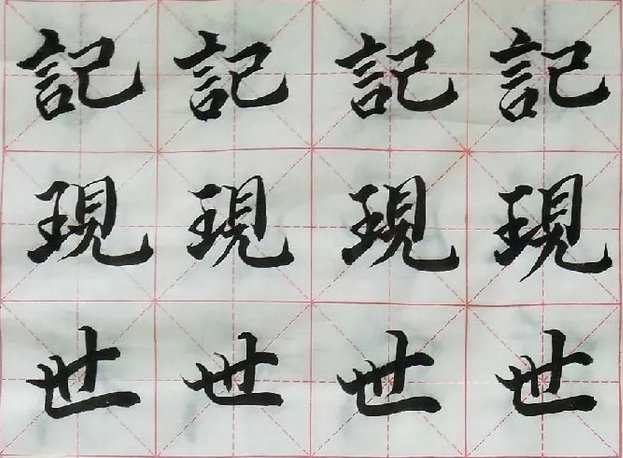Qi Gong's "On Calligraphy Quatrains" roughly mentioned the question of how many words to write every day when practicing calligraphy. Qi Gong's conclusion is as follows: "This is the same as the question of how much food to eat every day. Everyone's food intake is different and cannot be stipulated. Consistent. Always eat when you have a strong appetite, and it is easy to digest and absorb. Having a quota for students’ homework is a purpose and requirement, while practicing calligraphy for enthusiasts is another purpose and requirement, and they cannot be equated.”

Qi Gong gave an example, saying that he had a friend who was writing the "Zhang Qian Monument". He put the written paper on the ground, and then, day after day, he folded it into two big piles as high as one person. But Qi Gong said that when he went to see it, he felt that the upper ones were not as good as the lower ones. Those on the lower level were written earlier, and those on the upper level were written just now. Why is it that what I just wrote is not as good as what I wrote before? The reason is: I write later to give myself a "commitment", to complete the "tasks" set for myself every day, or to let my friends see my "scores" in the final exam. So, hurry!
But calligraphy doesn’t come in a hurry. The improvement of calligraphy level depends not only on the "quantity" of writing.
"Some people misunderstand the word 'Kung Fu'. They think that long time and large quantities are called 'Kung Fu'. In fact, 'Kung Fu' is the accumulation of 'accuracy.' Once you are proficient, you can write accurately, which is the effect of Kung Fu."
The most important thing in learning calligraphy is "accurate accumulation". To achieve this, it is not just about quantity. I am afraid you need to write more and practice more, but also think about it, and strive to be accurate every time you write a word, instead of completing the task haphazardly just to complete the task. When practicing calligraphy, you should think about the dot painting method and remember the structural characteristics of Chinese characters. When practicing calligraphy in this way, one word is worth hundreds of words.
Learning calligraphy is a matter of comprehensive cultivation, especially literati calligraphy. The words reflect a person's accumulation of knowledge, bookishness, and talent, not just the "bottom of the wrist" skills.
Don't give yourself rigid tasks, but you must carefully think about the few words, lines, and pictures you write every day, and experience the trajectory of the pen and ink on the rice paper, and the speed of the ink smearing on the paper. Words written in this way are truly present and truly written. Random strokes and imprints without thinking are not considered imprints.
Students, depending on the writing style and writing speed, the number of words should be between 50 and 100, and the practice time should not exceed two hours. Practice calligraphy while thinking, don't set tasks for yourself, and try your best to write to your own satisfaction.








